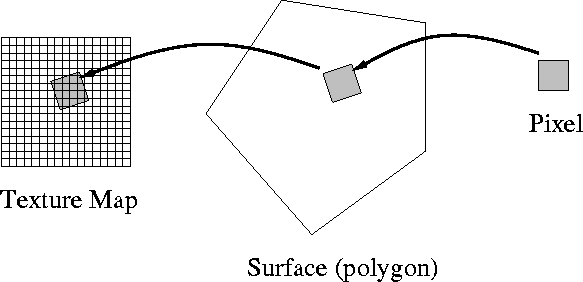- If we add detail by increasing model complexity, then computation cost increases.
- If detail is surface detail, then we can use texture mapping.
- Idea: scan a photo of the detail and paste it on objects.
- Associate texture with polygon
- Map pixel onto polygon and then into texture map
- Use weighted average of covered texture to compute colour.
 \
\
- Tile polygon with texture if needed
- For some textures, tiling introduces unwanted patern
- See SIGGRAPH 97 for method to extend textures (expensive)
- Greatly improves images!
- Not just ray traced image
- Textures will still appear ``smooth'' (i.e., no shadows)
- Bump mapping is similiar to texture mapping except that
we peturb the normal rather than the colour.
 \
\
- Perturbed normal is used for lighting calculation.
- Convincing - usually fail to notice silhouette is wrong.
- 2D textures can betray 2D nature in images
- Hard to texture map onto curved surfaces
- Idea: Use a 3D texture instead
- Usually procedural
Example:
if ( (floor(x)+floor(y)+floor(z))%2 == 0 ) then return RED; else return SILVER: endGives a ``3D checker board'' - Turbulence can also be simulated (marble)